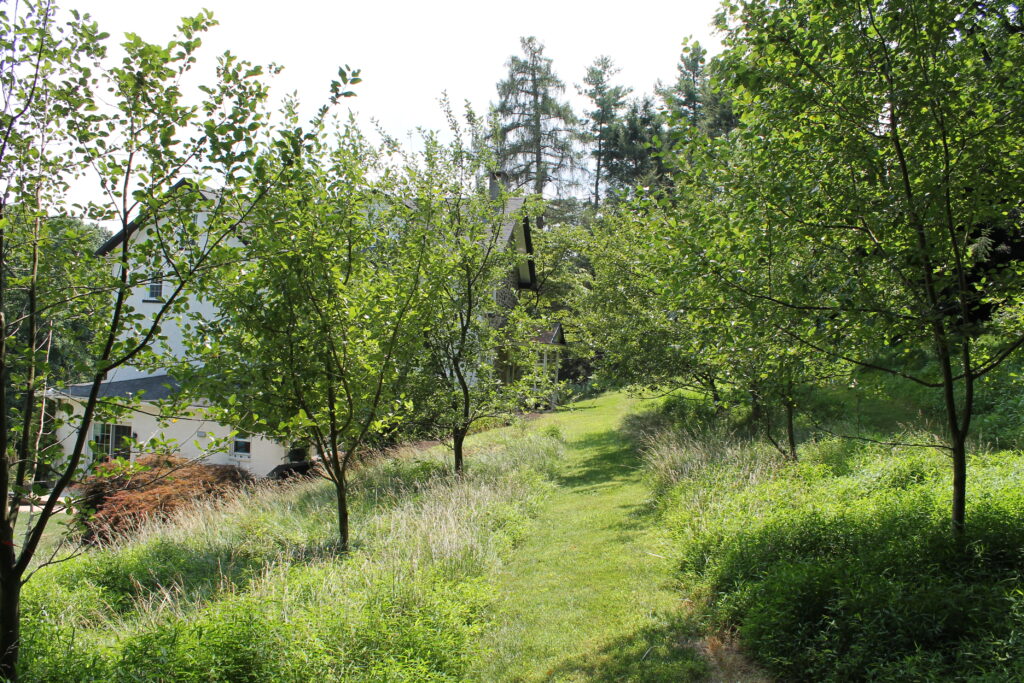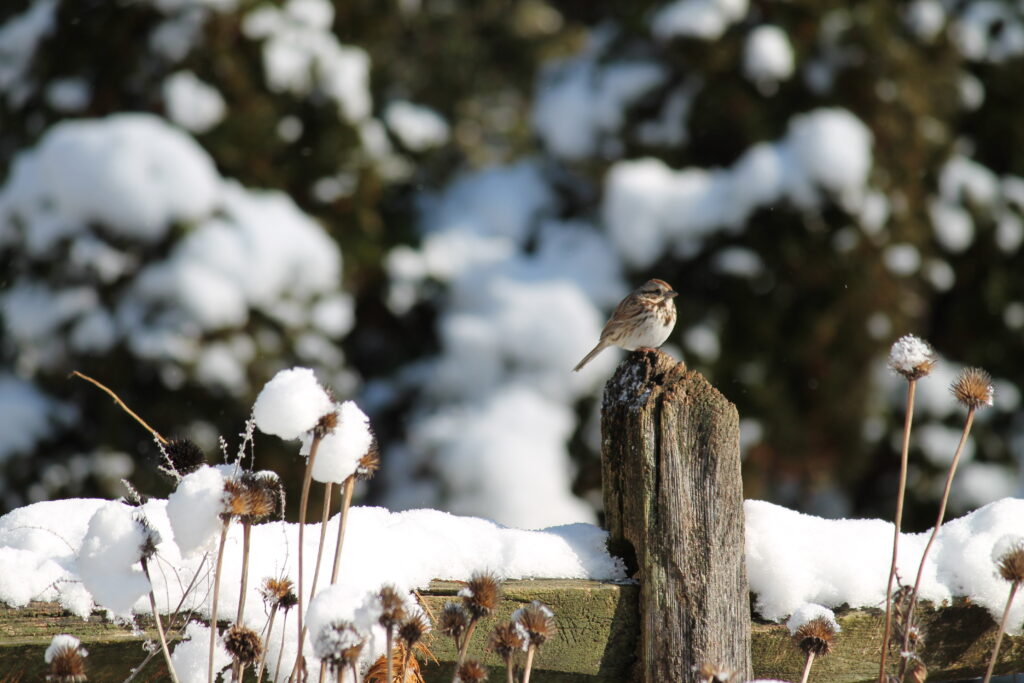Most people want a beautiful property, and many don’t want to spend their evenings and weekends working in the yard. But since all landscapes require care, learn to create a beautiful, low-maintenance garden. At the same time, create healthy habitat for your human, and non-human neighbors to enjoy!
Shift From Maintenance to Management
Gardens change over time. Plants grow. Some grow better than expected, and some fail to thrive. Consider allowing this change, and caring for your property as a process. Guide it with a light hand. Work with nature instead of against it. Allow trees to sprout and wildflowers to take root. You may be surprised at the beauty that results.
Plant Native Plants Densely
The more mulch space in the garden, the more obvious it is when something is out of place. It’s clear that the garden needs to be weeded when the mulch has dandelions and onion grass sprouting up in between desirable plants. Planting a garden densely with desirable plants not only shades out weed seeds, but the weeds that do emerge will often go unnoticed.
Select Appropriate Plants
This tends to be more of an issue in the DIY landscape. You see something pretty at the garden center, bring it home, only to find out that in 10-15 years that “King’s Gold” False Cypress reaches 10 feet tall and wide. Research plants before selecting them so that, for instance, the shrubs going under windows actually stay 3-4’ tall.
Embrace Your Wild Side
Another tip for a low-maintenance garden that is also great for habitat is to let it grow! Mow less, prune less, and mulch less!

Leave the Leaves
This method saves time, money, and is actually GREAT for your gardens! Large amounts of leaves may damage lawn, so, consider turning these areas, into woodland garden beds.
Leave Perennials Standing
Most perennials do not need to be cut back in the fall. Their seed heads actually feed birds and their stems are shelter for insects. After temperatures warm up in the spring, line trim the stems or break them off at differing heights. Then leave the cut stems as mulch!

Leave Weedy Debris in the Bed
It’s easy, and in a densely planted garden, no one will ever know! Keep in mind, this works for most weeds, but if there are seed heads on the weeds or if it’s a weed that roots easily, you will want to remove it from the bed completely. Better yet, don’t pull, but snap them off. Depending on the weed it may be easier to break them off than pull them. This is also beneficial because less soil is disturbed so new weeds are less likely to germinate.
Keep Up With the Garden
Walk through your property frequently. Look for problems like new invasive species or areas of erosion and address them early. Learn about pesticide use before you spray. It is usually far easier to tackle issues early, and you have the added benefit of spending time in your garden!
Hire Gardeners
For the ultimate low-maintenance garden, hire a gardener to do it for you! They can keep up with the weeds, prune as needed, cut back perennials and shrubs when the time is right, and let you know if something isn’t right.

DON’T Mulch With Stone
You don’t need stone against the house, or along the edge of a bed. You don’t need to use large groups of pea gravel, colored stone, or river rock anywhere in your basic landscape (except maybe in drainage scenarios). If you WANT to use large groups of stone, keep in mind that you will need to remove all of the stones every year, to pull out the debris and weeds that settle in.

